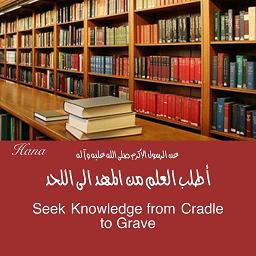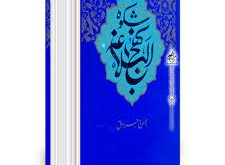Why prostration in prayer must be done on earth
Abu Said Al Khudri narrates:
The Messenger of Allah used to practice Itikaf (in the mosque), in the middle third of Ramadan. After the twentieth night, he used to return home on the twenty-first, and those who were in Itikaf with him would return to their homes as well. In Ramadan, in which he practiced Itikaf, he would pray the night prayers on the night in which he returned home, and then address the people, instructing them as Allah commanded him. He said, “I used to practice Itikaf for these ten days (i.e. the middle third of Ramadan), but I now intend to stay in Itikaf for the last ten days. Whoever was in Itikaf with me should stay at his place of seclusion. I have certainly been shown (the date of) this Night (of Qadr), but I have forgotten it. Search for it in the odd nights of the last ten days (of Ramadan). I also saw myself (in a dream) prostrating in mud and water.” On the twenty-first night, the sky was covered with clouds and it rained, and the rainwater started leaking through the roof of the mosque onto the praying place of the Prophet. With my own eyes, I saw the Prophet, upon completion of the morning prayer, leaving (the mosque) with his face covered with mud and water.
Sahih Al-Bukhari Hadith 3.235
Abu Hazim narrates:
Sahl bin Sa’d was asked about the (Prophet’s) pulpit, as to what was it made of. Sahl replied: No one is still alive among the people who knows about it better than I. It was made of tamarisk forest wood. So and so, the slave of so and so, prepared it for the Messenger of Allah. When it was constructed and placed (in the mosque), the Messenger of Allah stood on it, facing the Qibla, and said, “Allahu Akbar”, and the people stood behind him (in prayer). He recited and bowed, and the people behind him bowed. Then he raised his head, stepped back, descended and prostrated on the ground. He then again ascended the pulpit, recited, bowed, raised his head, stepped back, descended and prostrated on the ground. This is what I know about the pulpit.
Sahih Al-Bukhari Hadith 1.374
Hazrat Maimuna said:
The Messenger of Allah used to pray on a Khumra (a palm leaf mat large enough to place one’s face, while in prostration).
Sahih Al-Bukhari Hadith 1.378
Jabir bin Abdullah narrates:
The Messenger of Allah said: I have been given five things which were not given to any of the Prophets before me. These are:
1. Allah made me victorious by inspiring awe (and fear in my enemies) for a distance of one month’s journey.
2. The earth has been made a place of prostration for me, and a place to perform Tayammum. Thus, my followers can pray wherever (i.e. in any lawful place) they like, when the time of prayer is due.
3. War booty has been made lawful for me.
4. Every Prophet was sent only to his own nation, but I have been sent to all mankind.
5. I have been given the right of intercession (on the Day of Resurrection).
Sahih Al-Bukhari Hadith 1.429
Abu Sa’eed used to relate that he had seen the Prophet prostrating on wet mud, so much so that he could see mud stains on his forehead.
Saheeh Bukhari, Part I, p. 104
Hazrat Maimuna said:
The Messenger of Allah was once praying while I was experiencing my menses and sitting beside him. Sometimes his clothing would touch me during his prostration. She added: He prayed on a Khumra (a small palm leaf mat).
Saheeh Bukhari, Volume 1, Book 8, Number 376
The Prophet used to place his forehead on the earth while prostrating.
Saheeh Bukhari, Part 1, p. 97
The Prophet declared that the best place for prostration was the earth, or upon something that grows from the earth.
Kanz-ul-Ummal, Part 4., p. 113
(Famous Sunni book of Hadith)
The Prophet said to his wife Umm Salma, ” Bring me the Khumra from the mosque.” The word Khumra means a small piece of chatai made from palm leaf, on which only the head could be rested when prostrating. lbn-Athir, in his Jami-al-Usool has written, “Khumra is the Sajdagah (Persian word meaning “prostration place”) upon which the Shias of our time perform their prostrations.”
I (i.e. Maulana Zamankhan) maintain that by this Hadith it is Sunnat to keep a Sajdagah. Those who forbid it and call it the way of the Rafizites (Shiites) are wrong. To practice this Sunnat, I often perform my prostrations on a fan made from palm leaf, and I do not care about the criticism of the ignorant. We are concerned only with the Sunnat of the Prophet (SAA), regardless of whether they call it the way of the Rafizites or the Kharijites. Let them rave about it.
Maulana Vahidul Zamankhan (Sunni Alim),
author of ‘Anwar-ul-Lughat’, Chap. 7, p. 118
 WILAYAH NEWS VOICE OF THE GLOBAL AWAKENING
WILAYAH NEWS VOICE OF THE GLOBAL AWAKENING





